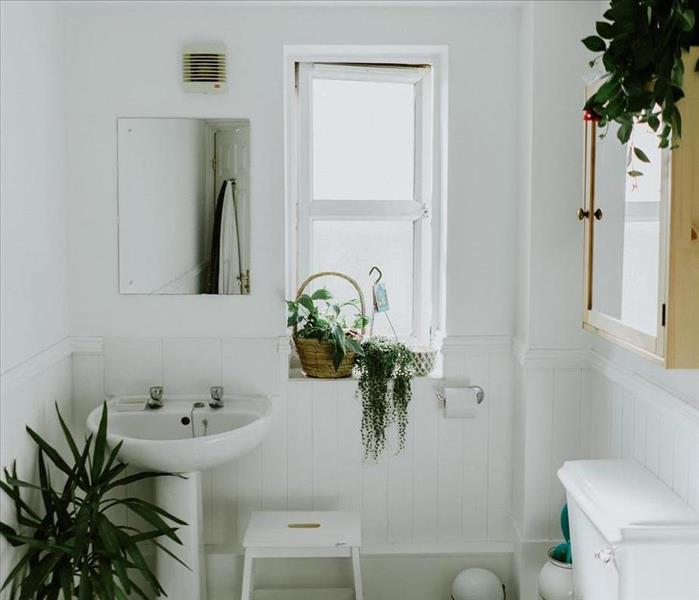Pro's Guide to Toilet Overflow Cleanup
6/10/2020 (Permalink)
Nobody likes to talk about overflowing toilets, but it happens. Not only is a toilet overflow a huge mess, it’s unsanitary and can lead to not only serious water damage but potential contamination as well.
So how do you go about cleaning something like that up? Do you just grab a mop and hope for the best?
Not exactly. We’ll walk you through the steps you can take in the moments after a toilet overflow occurs.
1. Stop the overflow.
The first order of business is preventing further flow of water and sewage into your home. Open the lid of your toilet tank and look for the circular rubber valve at the bottom of the tank – close that. Then, find the float, which is a rubber sphere attached to a plastic cylinder, lift it up and hold it in place. Next, turn off the toilet’s water valve while holding onto the float. It should be on the back of the toilet. If you’re alone, you may have to let the float go quickly to do this.
At this point, no more water should be flowing into the toilet bowl, and the toilet’s water supply should also be turned off. You’re now in a position where you can focus on cleaning.
2. Start mopping.
Grab a mop and immediately start to pull up as much of the water and waste that you can from the floor. Make sure that you’re wringing the mop out in an empty bucket to prevent any sort of contamination as you work your way through the mess.
3. Plunge the toilet.
Once you’ve cleaned up what you can, grab your plunger and see if you can unclog the toilet. If this doesn’t work after a few minutes, you may have to swap your plunger for a closet auger if you have one. If that doesn’t work, you may have to call in a plumber to deal with the clog.
4. Dump the waste water.
If your toilet is now flushable, dump the waste water down. If not, take it to a different toilet or find another place where you can sanitarily dump it.
5. Disinfect.
Fill the bucket with a sanitizing solution (1 cup of bleach with 1 gallon of warm water works). Sanitize anywhere that might have been contaminated by waste water or sewage using the solution, a mop and a cloth. You’ll probably want to grab rubber gloves for this, and change into clothes you don’t mind getting dirty.
6. Call a restoration company.
If serious water damage has occurred, or the contaminated water has penetrated through to walls, carpets or furnishings, now’s the time to talk to the restoration professionals at SERVPRO of West Seneca/Lancaster. We’ll be happy to come out and take a look at what happened and help you to assess the extent of your issue.



 24/7 Emergency Service
24/7 Emergency Service